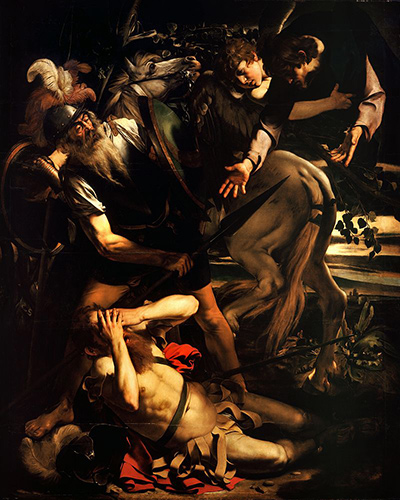The Conversion of Saint Paul is the second of Caravaggio’s paintings to depict the moment of Saint Paul’s revelation.
Along with The Crucifixion of Saint Peter, it was one of two pieces commissioned by Monsignor Tiberio Cerasi in September 1600. The first versions of both pieces were rejected, so Caravaggio was forced to repaint them.
These first two paintings ended up in the private collection of Cardinal Giacomo Sannessio, leading some to suggest that he took advantage of Cerasi’s sudden death in May 1601 to commandeer the paintings.
Certainly, Caravaggio was very popular at the time, having just completed The Calling of Saint Matthew and The Martyrdom of Saint Matthew.
It is unclear why the first paintings would have been rejected otherwise, as The Conversion of Saint Paul is even less traditional than its original counterpart, The Conversion of Saint Paul on the Road to Damascus.
The first version of The Crucifixion of Saint Peter, unfortunately, has been lost.
At any rate, The Conversion of Saint Paul and The Crucifixion of Saint Peter were completed in 1601 and accepted by the Cerasi estate to complete the commission.
Saint Paul and Saint Peter were popular subjects during this time, as the Catholic Church considered them crucial to its founding.
Also known as Saul of Tarsus, Saint Paul was originally a Jewish man who mistreated the followers of Jesus.
According to the bible, while travelling on the road to Damascus he was struck down and blinded by a vision of Jesus asking why Paul so persecuted his followers. This is the moment depicted in this painting.
Caravaggio has used his characteristic dramatic lighting to great effect here. The light appears to shine down from behind Jesus in the top right corner, bestowing on him a heavenly quality, and blinding Paul.
For the next three days Paul, still blind, spent his time in prayer and had to be led into Damascus.
Once there his sight was restored by a disciple of Jesus, Ananias of Damascus. Saint Paul was baptised and converted to become a follower of Jesus.




